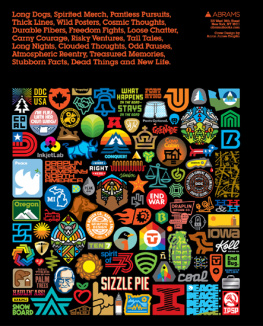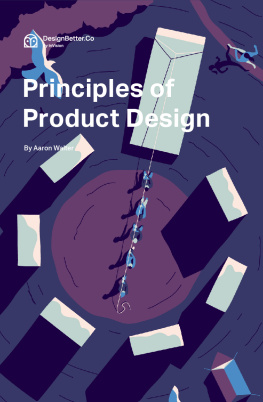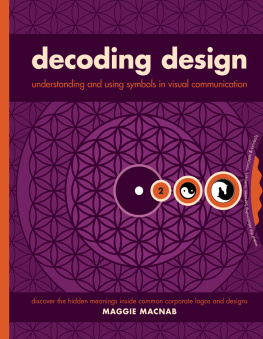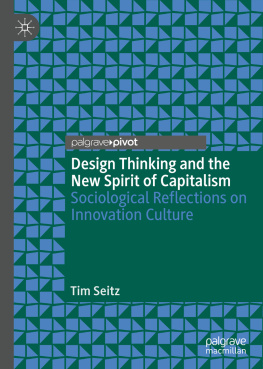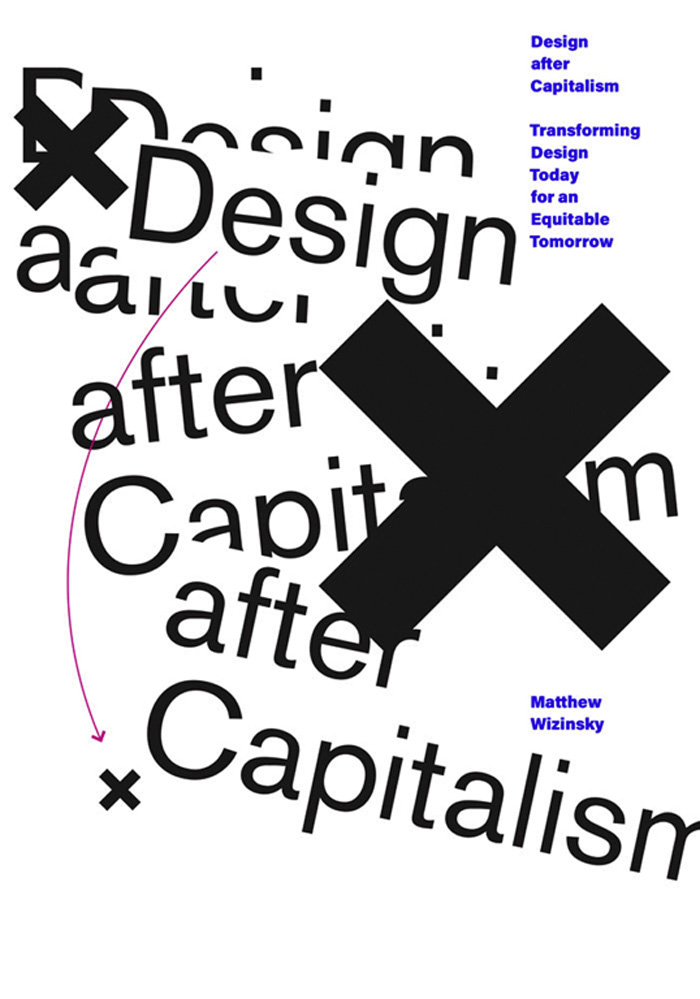
Design after Capitalism
Design after Capitalism
Transforming Design Today for an Equitable Tomorrow
Matthew Wizinsky
The MIT Press
Cambridge, Massachusetts
London, England
2022 Massachusetts Institute of Technology
All rights reserved. No part of this book may be reproduced in any form by any electronic or mechanical means (including photocopying, recording, or information storage and retrieval) without permission in writing from the publisher.
The MIT Press would like to thank the anonymous peer reviewers who provided comments on drafts of this book. The generous work of academic experts is essential for establishing the authority and quality of our publications. We acknowledge with gratitude the contributions of these otherwise uncredited readers.
This book was set in Utopia and Acumin by The MIT Press.
Library of Congress Cataloging-in-Publication Data
Names: Wizinsky, Matthew, author.
Title: Design after capitalism : transforming design today for an equitable tomorrow / Matthew Wizinsky.
Description: Cambridge, Massachusetts : The MIT Press, [2022] | Includes bibliographical references and index.
Identifiers: LCCN 2021013276 | ISBN 9780262543569 (paperback)
Subjects: LCSH: DesignEconomic aspects. | DesignSocial aspects.
Classification: LCC NK1520 .W59 2022 | DDC 745.4dc23
LC record available at https:/lccn.loc.gov/2021013276
10 9 8 7 6 5 4 3 2 1
d_r0
Contents
Preface
I never shouldve walked into that Sunglass Hut. So begins my imaginary memoir of life in a consumer society, where every narrative is shaped by objects, environments, symbols, and desires of consumption. Growing up in the suburban sprawl of metro Detroit in the 1980s and 1990s, I witnessed the power of a single product both to build and to destroy a metropolis. Even as the American economy was swinging toward postindustrialization, everyone I knew had family working for the auto industry, in one way or another. Some friends parents worked as engineers, administrators, or marketers in the gleaming, low buildings along the freeway in Dearborn; others worked in the few remaining factories or steel mills. In high school, some kids even harbored dreams of dropping out to work the line. There was still a sense that you could build a career of high wages, good benefits, and early retirement from unionized factory work. That version of the middle class, along with the entire economic system that created it, was vanishing quickly, though.
As a kid, I would regularly visit the North American Auto Show in Detroit. It was a breath-taking spectacle of style and technology. The newest, coolest, sleekest, and fastest. This was my hometowns calling card. It was also design! Yet walking out of Cobo Hall into a city literally crumbling was an exercise in cognitive dissonance. How was it possible that the sexy curves, crisp lines, glitz, and shine of automobiles had both built this city and let it fall apart? Detroit became emblematic of the ruins of industrial capitalism and the punchline to jokes about urban dysfunction. In the film RoboCop (1987), Detroit was the setting for a dystopian sci-fi vision of authoritarianism, political corruption, corrosive media, unbridled privatization, technology companies (literally) getting away with murder, and other obscene tropes of capitalism. This is not exactly the image of your hometown you wish to see on screens all over the world. However, Detroit in the 1980s was an excellent place to observe the worst effects of late twentieth-century American economy and culture. Utter stripping of the inner city by decades of lost employment as automotive manufacturing dwindled, white flight, wholesale divestment of all things public, militarized police pitted against crime (organized and disorganized), and disenfranchisement of citizens: all convened to produce a nearly perfect inversiona shadowof the once glittering capital of American industry.
The system that created the largest and most materially well-off middle class in history had run its course. The Great Gobbling-Up Machine gobbled up as much as it could and moved on. A similar fate has been met by countless cities across the countrynot to mention by old-growth forests, precious-metal and coal mines, freshwater streams and lakes, and landscapes stripped of their natural value. Of course, much is still left behind: peoples lives, elements of a natural ecosystem, and man-made infrastructures, albeit perhaps quite broken. Detroits population has dwindled to less than half the size it had been when my dad was born there in 1950. Yet along with every other place on the planet that has been gobbled up, what remains are the seeds for what grows next.
My entry to the world of graphic design came via teenage infatuation with punk rock and, inevitably, the art of the album cover. When I started my first band at fifteen years old, the punk subculture I joined had a particular ethos. It was independent and DIY. It was emphatically antiracist and pro-equality for all people, regardless of class, race, gender, or orientation. Within our community, we all were outsiders from the broader social worlds in which we were weirdos, rejects, or just off. Some flavors of the punk movement were decidedly anticapitalist. My personal politics as a teenager and young adult were too simplistic to grasp the meaning of anticapitalism. It was obvious that there was tremendous disparity in the worldjust look at Detroit. But while respecting the value of all people seemed an easy mindset to adopt, reckoning with the problems of the global political economy was just beyond my capacity. As life moved on, I became a designer and then a design educator. An underlying agitation with business as usual began to reveal what that teenage angst might have been better directed toward: transcending a historical system of hierarchy that was already in decline. In my life as an academic, my research agenda developed around studying and practicing participatory design methods mixed with speculative and critical design approachescritiquing the business-as-usual approaches toward which design tends to default. Writing a book against capitalism seemed the most punk rock thing I could do as a design scholar.
In 2015, I began teaching a design studio that challenges undergraduates in industrial, fashion, and communication design to imagine urban futures by materializing critical speculations. There has been much warranted critique of speculative design. Indeed, it appears the backlash against speculative design helped bring critical attention to the colonizing practices of design more generally. Speculative designers have at times been ruthlessly admonished for the elitist, white, heteronormative capitalist assumptions embedded in their scenarioseven those intended to be seen critically. These misgivings aside, it was through speculative design that I first embraced after capitalism as a framework to think about possible futures. I came to understand that this framework carried enough substantive research, theory, and empirical grounding outside of design to propose a reorientation to transform design from within.
In 2017, I curated an exhibition of student projects from this course. I sent copies of the exhibition catalog to many scholars whose work was studied by students in the classmost of whom I had never met. One recipient was Erik Olin Wright, professor of sociology at the University of WisconsinMadison. Wrights book Envisioning Real Utopias (2010) is an incredible compendium of case studies, empirical evidence, and theories on
Next page


